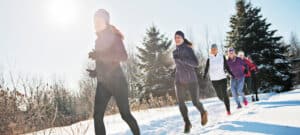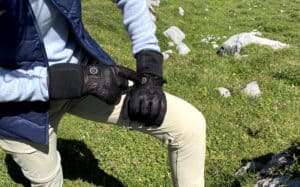Tip 1
Exercise plenty, but focus on building muscle. Muscles burn fat and sugar. The more muscle mass, the more they will burn. And that’s how you get nice and warm. Start with ten minutes of strength training a day, you will notice the difference after just a few weeks.
Tip 2
The first tip does not provide instant heat. But with heated socks, you don’t have to have quite as much patience. You’ll have warm feet within 30 seconds with just one press of a button! And they’ll stay warm for several hours (up to eight hours on the lowest setting) at a time. Great for at your desk, on a winter walk or in bed. Now of course you’ll think that we would say that! But as experts in cold feet, we have developed socks that really do work, are really nice to use and are really comfortable.
Tip 3
In addition to heated socks, you can also choose heated insoles, slippers and even shoes. The advantage of socks is that you can wash them over and over again. The advantage of insoles is that you can continue to wear your own nice socks.
Tip 4
This tip may be obvious, but you can probably catch yourself doing it often. It’s a beautiful autumn or spring day, the sun is shining and the sky is blue. You feel like looking a little more summery and you dress just too thin. When your body experiences cold, your body’s first reaction is to keep your vital organs warm and reduce blood flow to your arms and legs (starting with that of your hands and feet). Efficient of your body, but inconvenient for you. So no matter how warm it looks outside, always bring an extra jacket along! And also put a shawl, a pair of extra thick socks and maybe even a seat cushion in your bag.
Tip 5
Socks with silver thread, quitting smoking, woollen socks, contrast baths, not sitting with your legs crossed…these are all tips that help around the edges. If you don’t have electrical socks to hand, the only thing that will help is a hot bath or shower. No time? A quick foot bath so you can immerse your feet for a while can also be blissful.

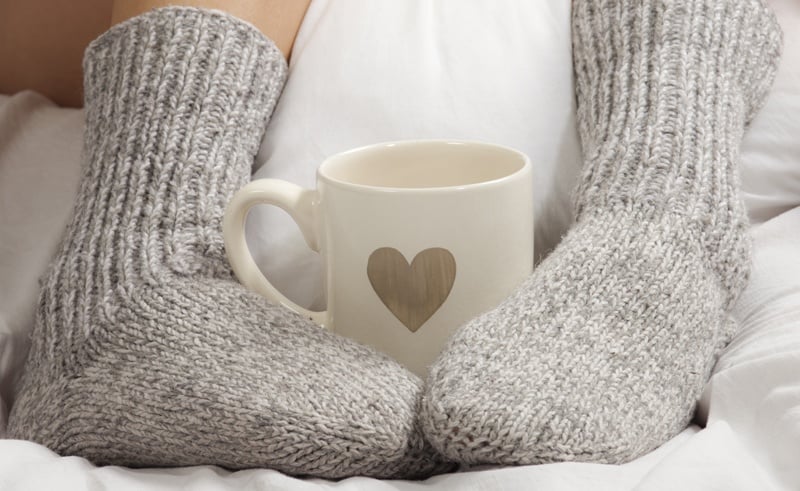
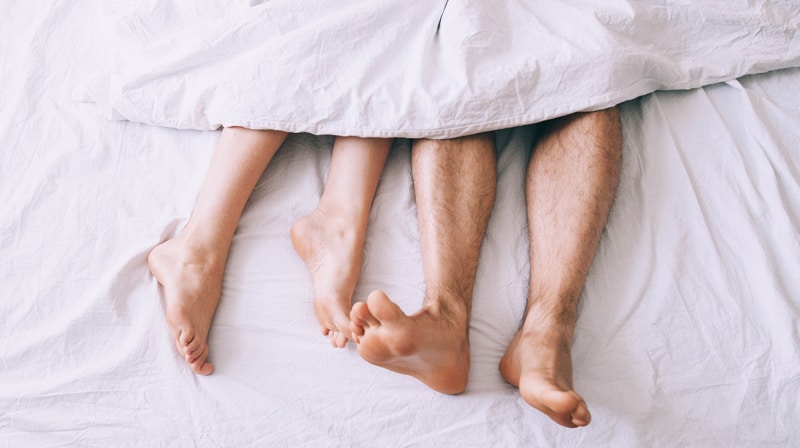
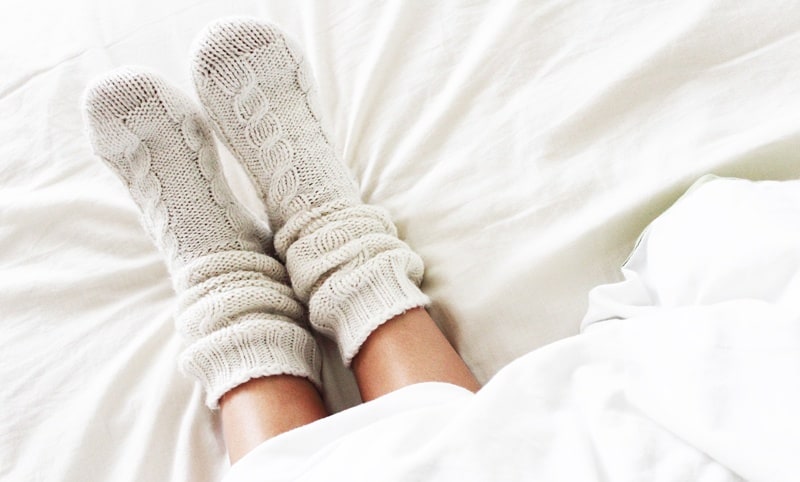
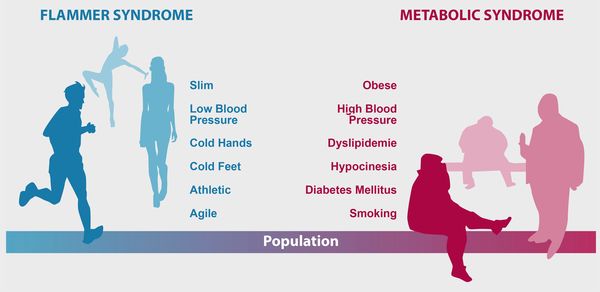 Never heard of it? You might not have. It is a relatively newly described condition that occurs mostly inslim, athletic and often highly educated women. It is the opposite of metabolic syndrome. An increased circulatory response to stimuli – such as cold, emotions, stress, sounds – can result in cold hands and feet. They are also more sensitive to pain, medication, caffeine, sounds and smells and often sleep poorly. Flammer syndrome is not dangerous, but it can cause considerable discomfort. Take care of yourself, avoid too much stress, pick a calm sport (such as yoga) and don’t overdo cardio. Would you like to know more about it? This Swiss website provides clear information on the syndrome:
Never heard of it? You might not have. It is a relatively newly described condition that occurs mostly inslim, athletic and often highly educated women. It is the opposite of metabolic syndrome. An increased circulatory response to stimuli – such as cold, emotions, stress, sounds – can result in cold hands and feet. They are also more sensitive to pain, medication, caffeine, sounds and smells and often sleep poorly. Flammer syndrome is not dangerous, but it can cause considerable discomfort. Take care of yourself, avoid too much stress, pick a calm sport (such as yoga) and don’t overdo cardio. Would you like to know more about it? This Swiss website provides clear information on the syndrome: 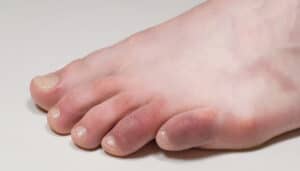 Also known as perniones. If you have been out in the cold and your feet feel itchy, burning or sore, chances are you have chilblains. When you have chilblains, the blood does not flow properly to the feet and toes and the skin turns red or bluish-red, before swelling and becoming inflamed. You may also get blisters and wounds. Unfortunately there is not much you can do about chilblains – symptoms will go away on their own but sadly, it can take all winter and your chilblains can come back every year. Prevention is better than cure, so exercise enough and keep those feet warm!
Also known as perniones. If you have been out in the cold and your feet feel itchy, burning or sore, chances are you have chilblains. When you have chilblains, the blood does not flow properly to the feet and toes and the skin turns red or bluish-red, before swelling and becoming inflamed. You may also get blisters and wounds. Unfortunately there is not much you can do about chilblains – symptoms will go away on their own but sadly, it can take all winter and your chilblains can come back every year. Prevention is better than cure, so exercise enough and keep those feet warm!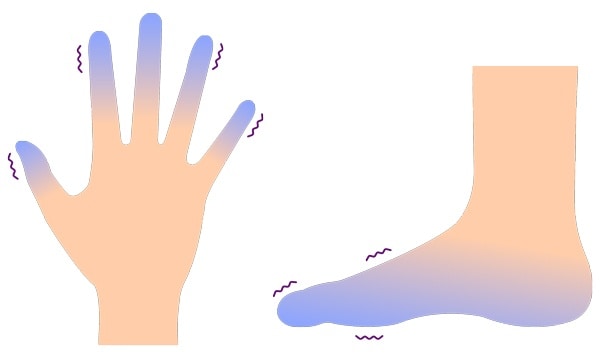 Also called Raynaud’s Phenomenon. When the arteries contract too quickly, the blood supply to the hands and feet stops. Your toes or fingers start by turning white, then blue, then red. It is estimated that as many as fifteen per cent of women and one per cent of men suffer from Raynaud’s Disease to one extent or another. The disease is usually harmless, so the best tip is to keep your feet as warm as possible by wearing thick socks and getting plenty of exercise.
Also called Raynaud’s Phenomenon. When the arteries contract too quickly, the blood supply to the hands and feet stops. Your toes or fingers start by turning white, then blue, then red. It is estimated that as many as fifteen per cent of women and one per cent of men suffer from Raynaud’s Disease to one extent or another. The disease is usually harmless, so the best tip is to keep your feet as warm as possible by wearing thick socks and getting plenty of exercise.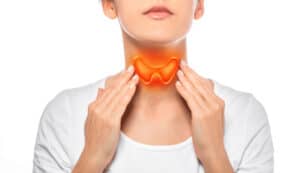 It could be that your thyroid is working too slowly, a phenomenon known as hypothyroidism. If, in addition to cold hands and feet, you also suffer from fatigue, pale skin, somber moods and hair loss, it is a good idea to see your doctor and find out if you may have a thyroid hormone deficiency.
It could be that your thyroid is working too slowly, a phenomenon known as hypothyroidism. If, in addition to cold hands and feet, you also suffer from fatigue, pale skin, somber moods and hair loss, it is a good idea to see your doctor and find out if you may have a thyroid hormone deficiency.
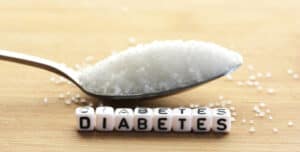 In diabetic patients, the blood vessels can become damaged, reducing the ability of the blood to circulate. The result is cold feet. Nerve damage, also known as neuropathy, can also happen as a result of diabetes. This makes you feel like you have cold feet, even though the body is maintaining them at the right temperature. It is caused by a faulty signal from the brain that unfortunately cannot be helped.
In diabetic patients, the blood vessels can become damaged, reducing the ability of the blood to circulate. The result is cold feet. Nerve damage, also known as neuropathy, can also happen as a result of diabetes. This makes you feel like you have cold feet, even though the body is maintaining them at the right temperature. It is caused by a faulty signal from the brain that unfortunately cannot be helped.





